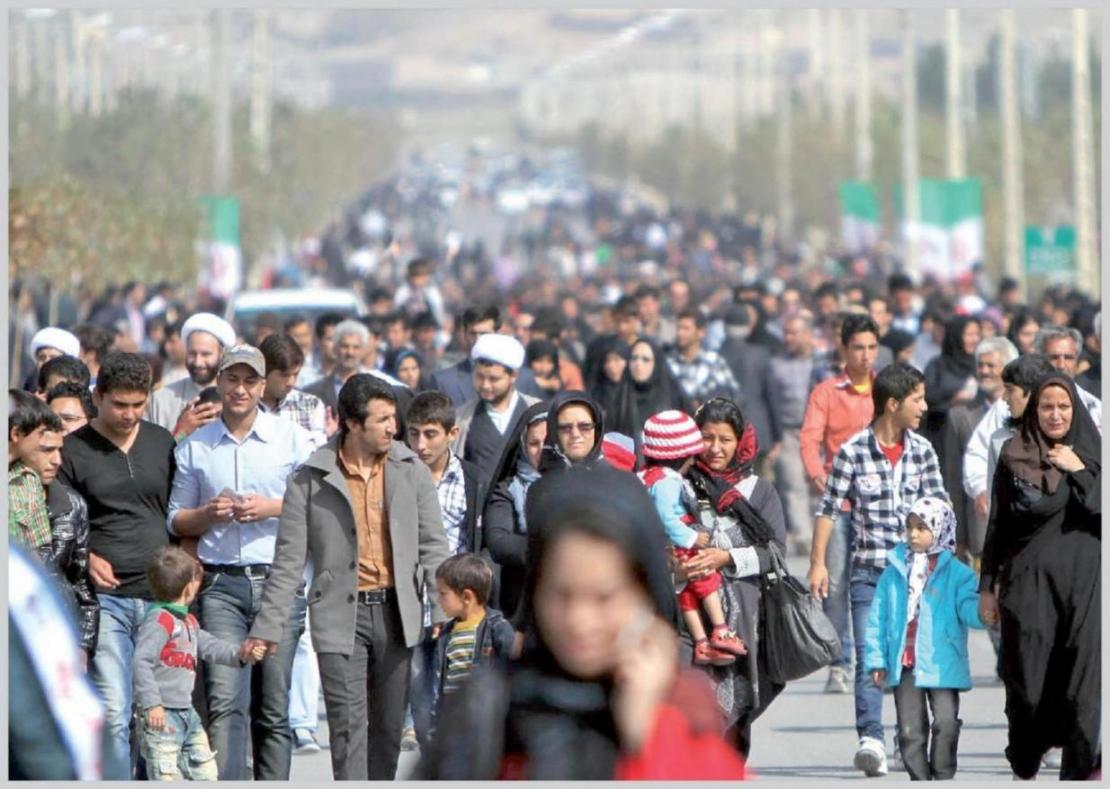While Iran’s population grew at a rate of more than 3% per year between 1956 and 1986, the growth rate began to decline in the late 1980s and early 1990s after the government initiated a major reproductive health and family planning program, as the country was coping with several economic problems during and after the 8-year Iran-Iraq war.
By the year 2007, the annual population growth rate had declined to 0.7 percent. At current fertility rates, Iran’s median age is expected to increase from 28 in 2013 to 40 by 2030. The fear of a zero population growth rate by the year 2050 appears large.
It may be recalled that on July 25 2012, Supreme Leader Ayatollah Seyed Ali Khamenei stated that Iran’s contraceptive policy made sense 20 years ago, “but its continuation in later years was wrong ... Scientific and experts studies show that we will face population aging and reduction (in population) if the birth-control policy continues.”
Increasing the population would strengthen national identity, help economic growth, and counter undesirable aspects of western lifestyles. “So quick and efficient steps must be taken to offset the steep fall in birth rate of recent years,” Ayatollah Khamenei emphasized.
On June 24, 2014, as part of the plan to boost population growth rate, the Majlis banned vasectomies and tubal ligation and introduced punishment for those involved in encouraging contraceptive services and abortions or any other form of birth control, including 2 to 5 years imprisonment.
Another measure to enhance the growth rate was to provide insurance coverage to 28 infertility medicines.
Infertility
The presence of three million infertile couples in the country, and an aging population, apparently seem two unrelated problems. However, according to experts, resolving one of these problems can result in addressing the other. With treatment of infertile couples population growth can be enhanced, and also the social taboo of infertility can be tackled. Using fertility drugs greatly increases a woman’s chances of having twins or multiple births, which in turn helps increase population growth rate besides addressing a social issue.
The Majlis also approved a bill that allows the government to increase maternity leave to nine months from six months and to give fathers two-week paternity leave. The Guardian Council passed the law in July 2014. Meanwhile, lawmakers are proposing to allocate $ 4 billion to a plan that will create incentives for young Iranians to get married and have children. The target groups are mainly university students and conscripts in the military.
However, there are concerns about the way the issue is addressed, including the restriction of contraceptive use such as condoms. “In order to fight AIDS, the only safe method is to distribute and teach people to use condoms,” said Dr Minoo Moharez, head of the Aids Research Centre at Tehran University. “If, based on the policies, condom distribution is impeded it will be catastrophic as the increase in AIDS patients from unprotected sex will be compounded.”
Not Proper
Meanwhile, Health Minister Hassan Ghazizadeh Hashemi has also expressed concern about the declining birth rate. He however, said parliament and government should put a proper plan into action that would not “harm” the people.
“What I am worried about is that inexpert decisions can again encourage illegal activities which we witnessed in the first two decades of the revolution … activities such as illegal abortions, which have serious psychological problems”, he noted quoted by IRNA.
The minister also said it is important to convince the people that the declining growth rate will lead to an aging population.
Mohammad Esmail Motlagh, a senior health official opined that instead of introducing punishment as deterrent, the Majlis could introduce incentives to encourage new births.


